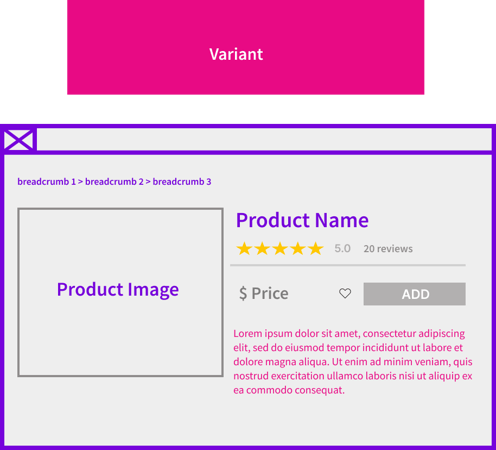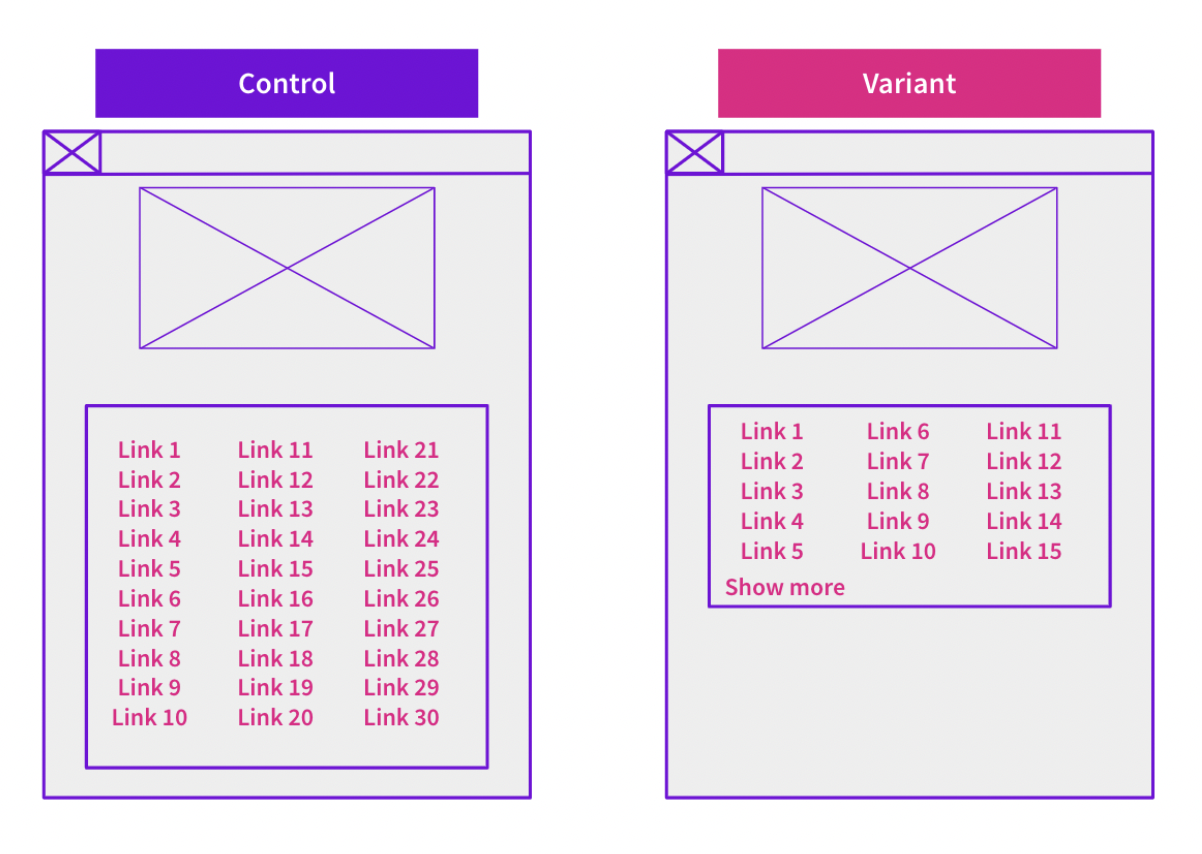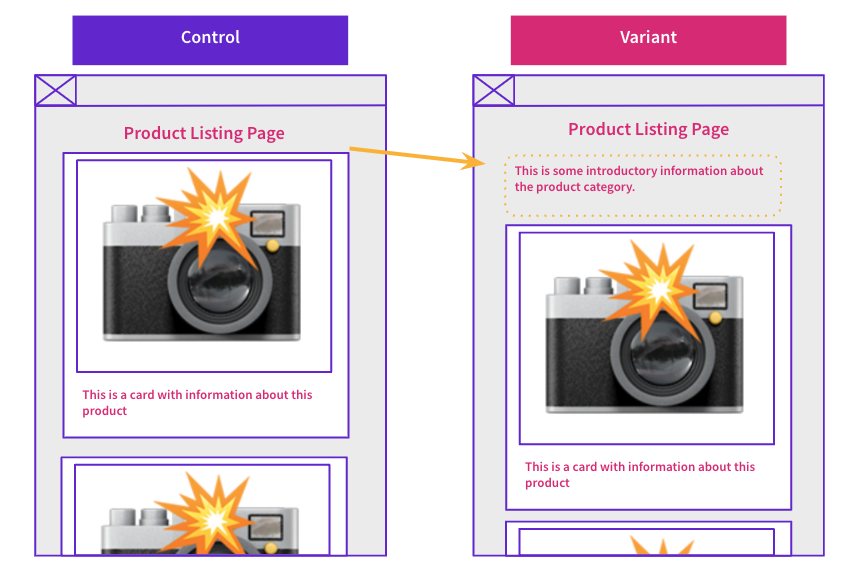Start here: how our SEO split tests work
If you aren't familiar with the fundamentals of how we run controlled SEO experiments that form the basis of all our case studies, then you might find it useful to start by reading the explanation at the end of this article before digesting the details of the case study below. If you'd like to get a new case study by email every two weeks, just enter your email address here.
In this week’s #SPQuiz we asked our followers what they thought the impact on organic traffic would be from repurposing product descriptions that were behind tabs into a content container above the fold.
Here is what they thought:
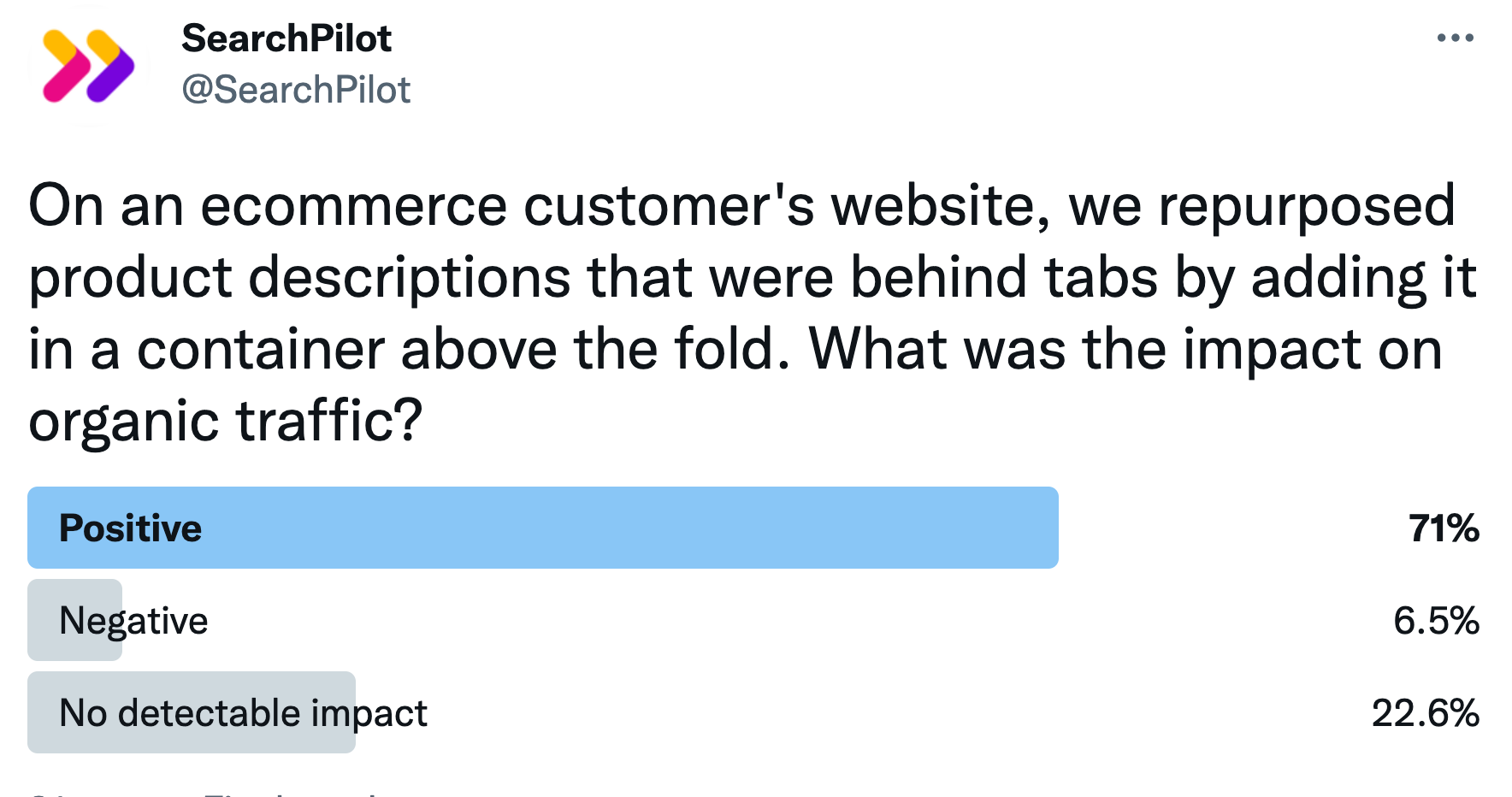
Most of our followers believed that this change had a positive impact on organic traffic; they were right! When we included product descriptions in a container above the fold, this had a positive impact on organic traffic.
You can read the full case study down below!
The Case Study
An ecommerce customer wanted to explore the impact of using product description content that was found lower down the page in a snippet above the fold. The original content was also hidden behind a tab that required JavaScript to be rendered to see it.
This content contained a lot of important long tail keywords for these pages, so we hypothesized that by both bringing the product description above the fold and also exposing the content on-page without JavaScript dependencies we would improve organic traffic.
Here’s an example of what this change looked like:
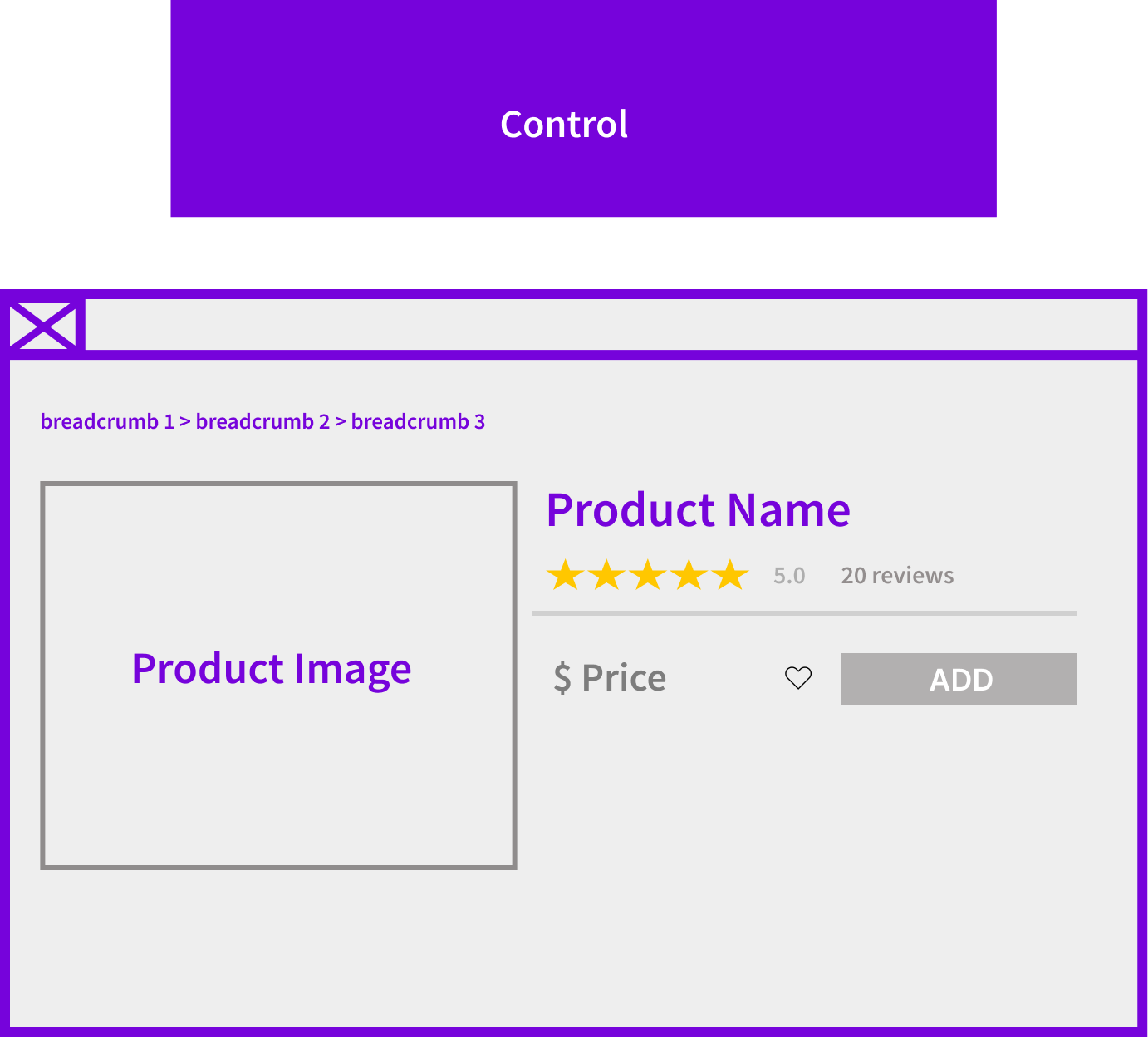
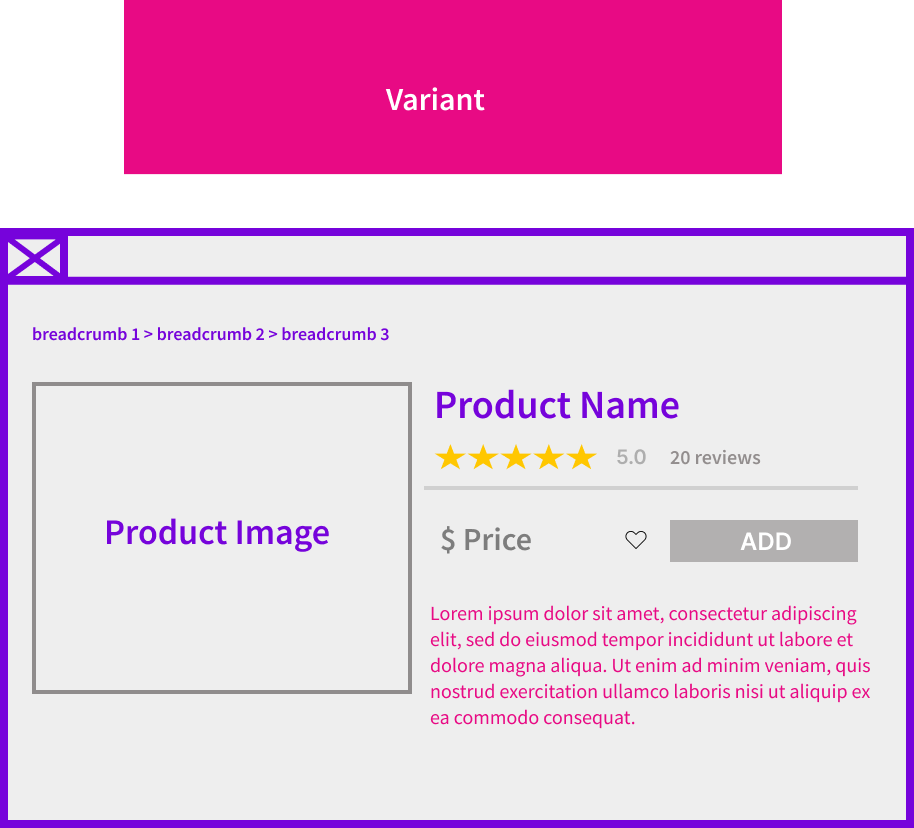
The chart below shows the impact of this test on organic sessions for the search results pages:
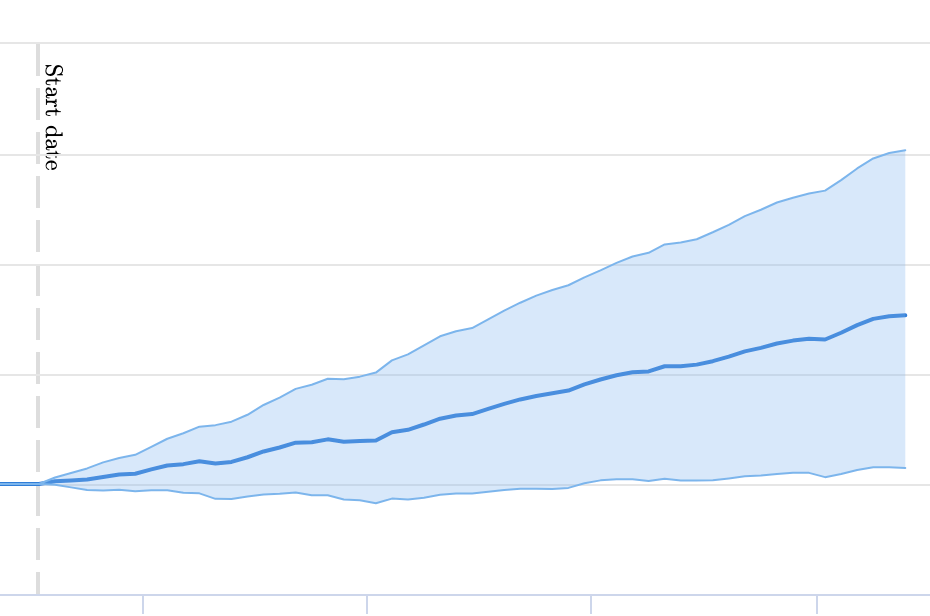
The outcome of this SEO split test was a positive impact on organic traffic with a 14% uplift on desktop!
We usually recommend that our customers run tests on groups of pages that get at least 1,000 sessions per day to get a reliable model. However, we can get results on pages on pages with less traffic if the impact is large enough and this test was an example of that.
In this case, we were able to still get a statistically significant result, but we had to run the test for longer than we typically do.
Regardless, the result confirmed our hypothesis that adding this content above the fold would have a positive impact - although we can’t know for sure if it was because it was further up the page, we exposed it from the tab, or a combination of both factors.
To receive more insights from our testing, sign up for our case study mailing list, and please feel free to get in touch if you want to learn more about this test or our split-testing platform.
How our SEO split tests work
The most important thing to know is that our case studies are based on controlled experiments with control and variant pages:
- By detecting changes in performance of the variant pages compared to the control, we know that the measured effect was not caused by seasonality, sitewide changes, Google algorithm updates, competitor changes, or any other external impact.
- The statistical analysis compares the actual outcome to a forecast, and comes with a confidence interval so we know how certain we are the effect is real.
- We measure the impact on organic traffic in order to capture changes to rankings and/or changes to clickthrough rate (more here).
Read more about how SEO A/B testing works or get a demo of the SearchPilot platform.
